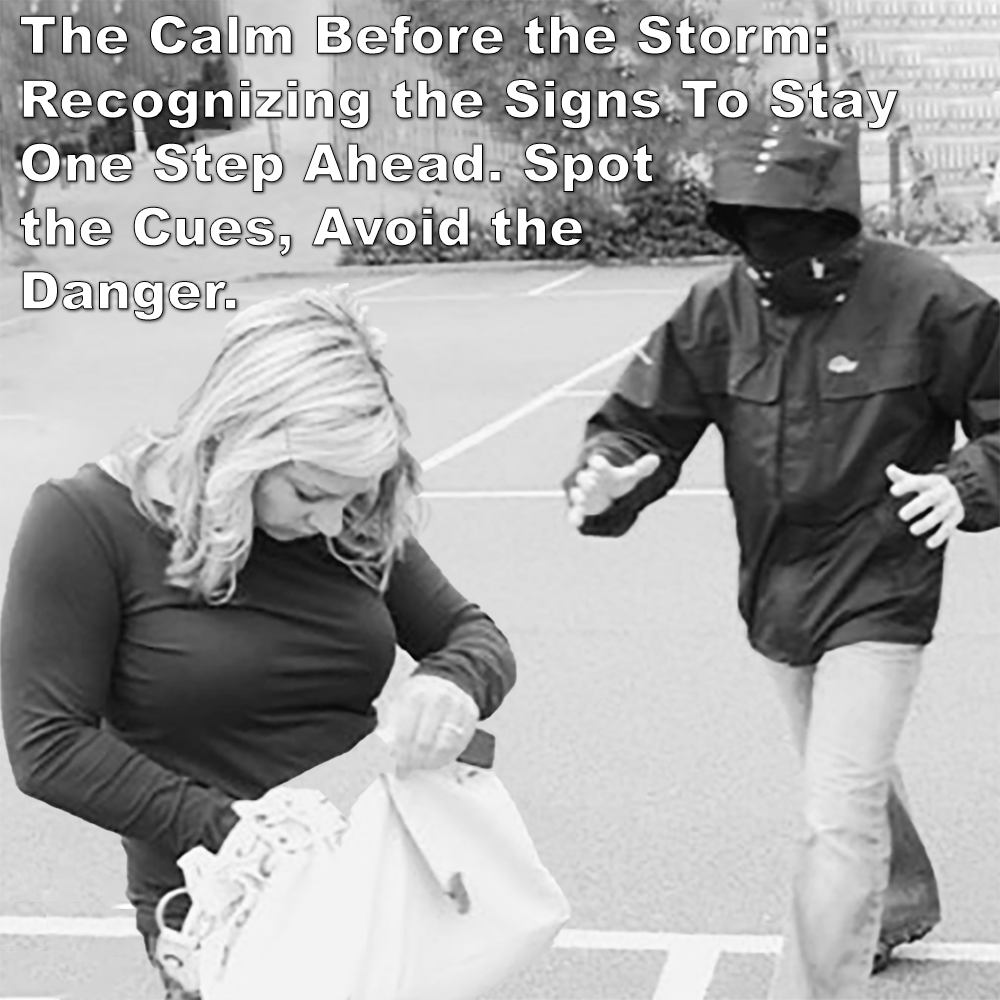
The Calm Before the Storm: Recognizing the Signs To Stay One Step Ahead. Spot the Cues, Avoid the Danger.
Posted by ADAM CARTER on NOV 27, 2024

The Calm Before the Storm: Recognizing the Signs To Stay One Step Ahead. Spot the Cues, Avoid the Danger.
(Approx 2 minute 35 second read)
In a recent article, I shared an example from my time as an EMT, where I encountered a patient under the influence. I noticed he was about to ‘kick off’, based on his aggressive language, posturing, and movements.
Someone commented, asking how you train for awareness – how to recognize cues and stay calm when signals from another person indicate something dangerous might be about to happen.
To answer the question – honestly, it’s not that difficult if you think about it. How many times have you come across a time when a friend or loved one is showing signs of being upset, angry or frustrated. You instinctively pick up on the cues they are giving off.
If your interest is in self-defense, it’s about recognizing pre-incident indicators, practicing positioning, and understanding verbal and non-verbal cues to defuse a situation early. This type of training begins with situational awareness – but doesn’t end there.
This kind of training often combines scenario-based drills, role-playing, and mental preparation to ensure responses remain calm, deliberate, and effective.
Continuing with the example from my EMT days: During training, we had to complete scenario-based drills. We were given a set of circumstances – a patient having a heart attack or stroke, sometimes multiple patients, some with severe injuries, amputations, or even fatalities.
There were areas where cars were overturned, patients were trapped, motorcycle crashes. There were violent or aggressive individuals, sometimes armed with weapons, when we entered a room to offer assistance. All of it had to be dealt with professionally and calmly, all while attending to their injuries, and being aware of our surroundings to remain safe.
Everything happens in training. Your goals and the context you train in make the difference. If you train to be the fittest, toughest, baddest fighter, your skills may only transfer to situations where a fight kicks off.
Your awareness of a situation will probably only start when you’re standing opposite someone, waiting for the fight to begin. Why? Because that’s what you’ve trained for.
As I’ve said countless times before, it’s all about context.
Self-defense isn’t just about the fight; it’s about managing situations before they escalate. It’s about spotting early warning signs: facial expressions, hand movements, where someone’s looking, how they’re speaking, or whether they’re trying to position themselves in a dominant way. You’ve got to use your voice, body language, and positioning to de-escalate and keep yourself safe.
This comes down to practicing realistic scenarios, so your responses are measured, not over the top. Paying attention to body language, facial expressions, and what’s happening around you can make all the difference, enhancing your ability to pick up subtle cues.
If you’re taught only to fight – to engage in a consensual exchange of strikes – that’s all you’ll be prepared for. It’s not difficult to understand. You respond how you train.
If you don’t train to pick up on the cues people give off before a confrontation, unless you’re standing opposite each other, expecting the fight, you won’t recognize those signals when it counts.
Most martial arts classes don’t cover much of this, and that’s okay. Just be clear about your goals – fitness, fun, or competition are great reasons to train. But if you claim to teach self-defense, your training needs to reflect that reality.
Back in the UK in the 1970s, the ‘Green Cross Code’ taught road safety to children with a simple message: Stop, Look, Listen, and Think. The same principle applies to self-defense.
‘Stop’ to assess the situation. ‘Look’ for subtle cues. ‘Listen’ to what’s being said (and unsaid). And ‘Think’ before you act. Awareness keeps you one step ahead, whether crossing a road or avoiding danger.
Written by Adam Carter – Shuri Dojo
